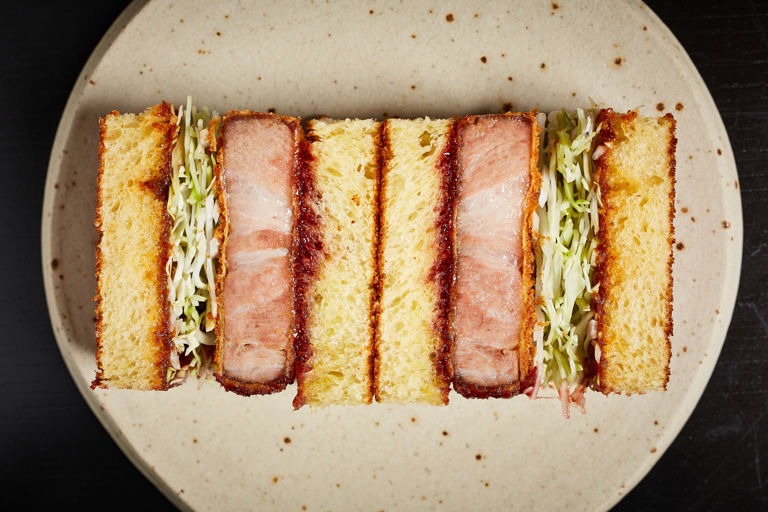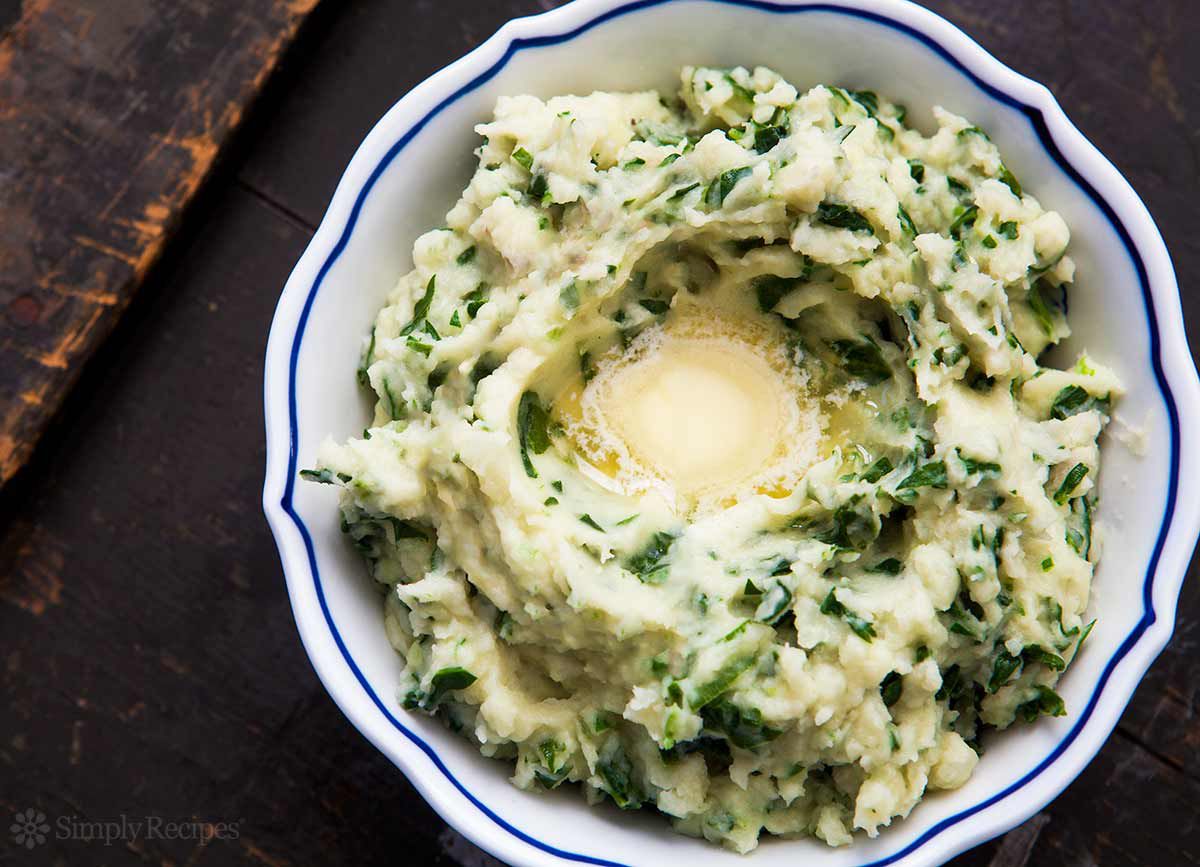
Katsu Sando, a Japanese sandwich featuring breaded and deep-fried cutlet (katsu) sandwiched between soft, fluffy slices of milk bread, has become a beloved dish both in Japan and around the world. This seemingly simple yet exquisitely flavorful creation embodies the essence of Japanese comfort food. In this article, we will explore the origins, preparation, variations, and cultural significance of Katsu Sando, highlighting why this sandwich has captured the hearts and taste buds of so many.
Contents
Origins and History Katsu Sando

The Katsu Sando traces its origins to the late 19th and early 20th centuries during Japan’s Meiji era (1868-1912), a period marked by rapid modernization and Western influence. The word “katsu” is derived from “katsuretsu,” which is a Japanese phonetic adaptation of the English word “cutlet.” The concept of breaded and fried meat cutlets was introduced to Japan by Western cuisine, particularly from Europe.
While the exact origins of the Katsu Sando are debated, it is widely believed that the dish first gained popularity in the 1920s. The Ginza district in Tokyo, known for its culinary innovations, is often credited with popularizing the Katsu Sando. It was here that restaurants and cafes began serving breaded pork cutlets sandwiched between slices of bread, creating a convenient and satisfying meal for busy city dwellers.
Preparation and Ingredients
The beauty of the Katsu Sando lies in its simplicity and the quality of its ingredients. The traditional preparation involves a few key components:
- Katsu: The centerpiece of the sandwich is the breaded and fried cutlet, which can be made from pork, chicken, or beef. Pork loin (hire-katsu) and pork fillet (rosu-katsu) are the most common choices. The meat is typically pounded to tenderize it, seasoned with salt and pepper, coated in flour, dipped in beaten egg, and then coated with panko breadcrumbs before being deep-fried to golden perfection.
- Bread: The bread used for Katsu Sando is shokupan, a type of Japanese milk bread known for its soft, fluffy texture and slightly sweet flavor. Shokupan provides the perfect contrast to the crispy katsu, creating a harmonious blend of textures.
- Sauce: A tangy and savory tonkatsu sauce is often drizzled over the katsu before assembling the sandwich. Tonkatsu sauce is a thick, Worcestershire-based condiment that adds a rich umami flavor. Some variations may include mustard or mayonnaise for added depth of flavor.
- Cabbage: Finely shredded cabbage is a common addition, providing a refreshing crunch and balancing the richness of the fried cutlet.
To assemble the Katsu Sando, the fried cutlet is placed between two slices of shokupan, often with a layer of tonkatsu sauce and shredded cabbage. The sandwich is then cut into neat, manageable portions, typically with the crusts removed for a refined presentation.
Variations and Modern Interpretations

While the classic Katsu Sando remains a staple, various interpretations and modern twists have emerged, showcasing the versatility of this beloved sandwich. Some notable variations include:
- Chicken Katsu Sando: Instead of pork, chicken breast or thigh is used for the cutlet. The preparation process remains the same, resulting in a lighter yet equally delicious sandwich.
- Gyukatsu Sando: This variation features a beef cutlet, offering a richer and more decadent flavor. The beef is often cooked to medium-rare before being breaded and fried, ensuring a juicy and tender bite.
- Ebi Katsu Sando: For seafood lovers, the ebi (shrimp) katsu sando is a delightful option. The shrimp cutlets are breaded and fried, providing a unique and flavorful twist.
- Vegetarian Katsu Sando: Catering to vegetarians, this version uses ingredients like tofu, eggplant, or portobello mushrooms in place of meat. These ingredients are similarly breaded and fried, maintaining the sandwich’s crispy texture and satisfying taste.
- Fusion Katsu Sando: Chefs around the world have experimented with incorporating different flavors and ingredients, such as using different types of bread, adding spicy sauces, or including pickled vegetables for a tangy contrast.
Cultural Significance and Popularity
The Katsu Sando holds a special place in Japanese hometogel login cuisine and culture. It is a popular item in bento boxes, convenience stores, and cafes across Japan, reflecting its status as a beloved comfort food. The sandwich’s convenience, portability, and deliciousness make it an ideal choice for a quick lunch, a picnic, or even a late-night snack.
In recent years, the Katsu Sando has gained international popularity, thanks in part to the global rise of Japanese cuisine. It has become a trendy menu item in high-end restaurants, street food markets, and food trucks worldwide. The sandwich’s simple yet satisfying nature, combined with the allure of Japanese culinary traditions, has captivated food enthusiasts across the globe.
Making Katsu Sando at Home

For those who want to experience the joy of a Katsu Sando in their own kitchen, here is a step-by-step guide to making the classic version:
Ingredients:
- 4 slices of shokupan (Japanese milk bread)
- 2 boneless pork loin cutlets (about 1/2 inch thick)
- Salt and pepper to taste
- 1/2 cup all-purpose flour
- 1 large egg, beaten
- 1 cup panko breadcrumbs
- Vegetable oil for frying
- 1/2 cup tonkatsu sauce
- 1 cup finely shredded cabbage
Instructions:
- Prepare the Pork Cutlets:
- Pound the pork cutlets to about 1/4 inch thickness using a meat mallet.
- Season both sides with salt and pepper.
- Bread the Cutlets:
- Dredge each cutlet in flour, shaking off any excess.
- Dip the cutlets in beaten egg, ensuring they are fully coated.
- Press the cutlets into panko breadcrumbs, coating them evenly.
- Fry the Cutlets:
- Heat about 1/2 inch of vegetable oil in a large skillet over medium-high heat.
- Fry the cutlets for 3-4 minutes on each side, or until golden brown and crispy.
- Remove the cutlets from the oil and place them on a paper towel-lined plate to drain excess oil.
- Assemble the Sandwiches:
- Spread a generous amount of tonkatsu sauce on one side of each slice of shokupan.
- Place a fried cutlet on two slices of bread.
- Top with shredded cabbage.
- Place the remaining slices of bread on top to form sandwiches.
- Serve:
- Cut the sandwiches into halves or quarters, removing the crusts if desired.
- Serve immediately and enjoy!
Conclusion
The Katsu Sando is more than just a sandwich; it is a culinary experience that combines the best of Japanese and Western flavors and techniques. Its simplicity, versatility, and delightful taste have earned it a special place in the hearts of food lovers around the world. Whether enjoyed in a quaint Japanese café, a bustling urban eatery, or the comfort of your own home, the Katsu Sando offers a taste of Japan’s rich culinary heritage and a reminder of the joy that good food can bring.
Read More Article About “Colcannon: A Traditional Irish Comfort Food 2024“







